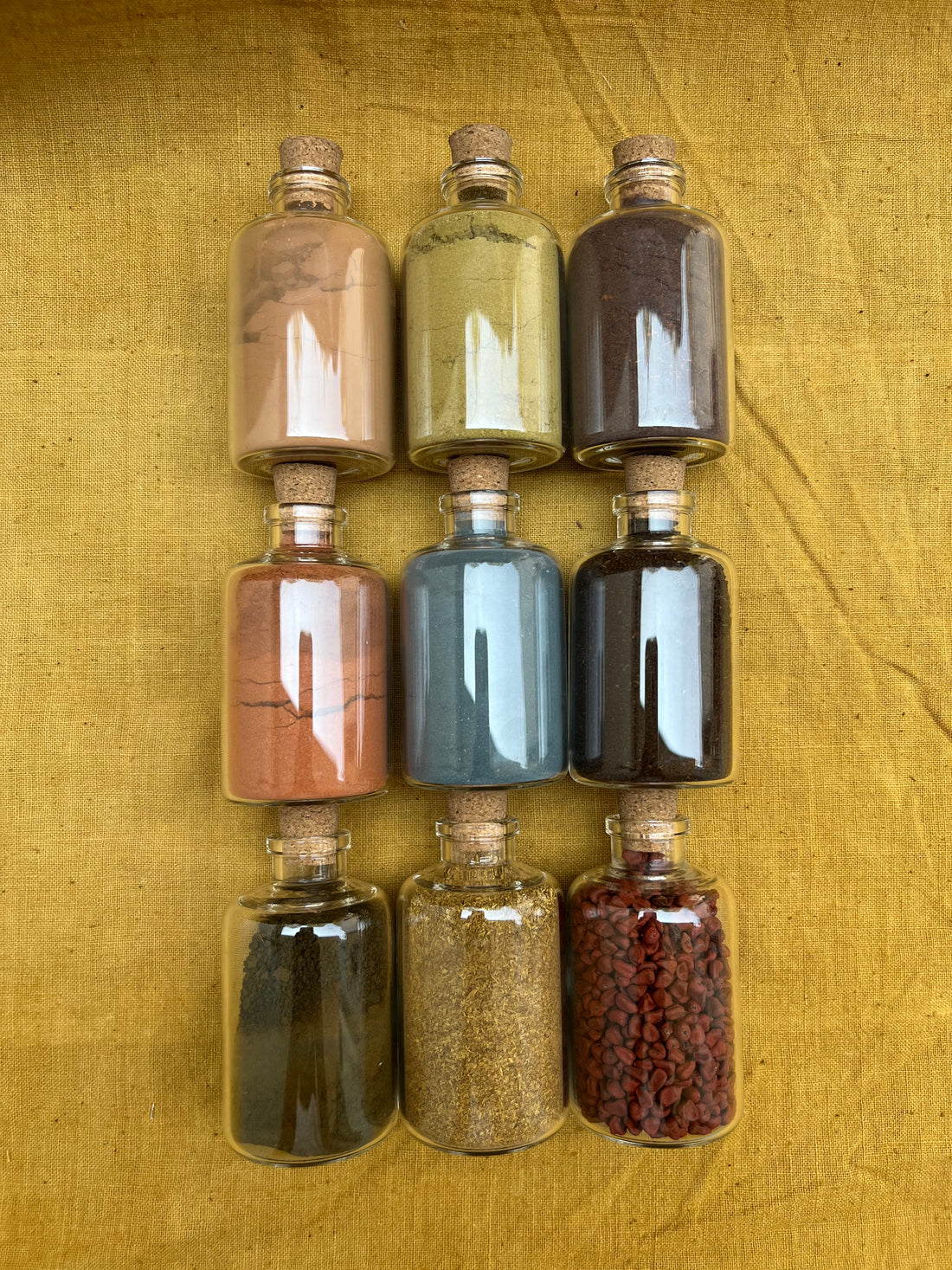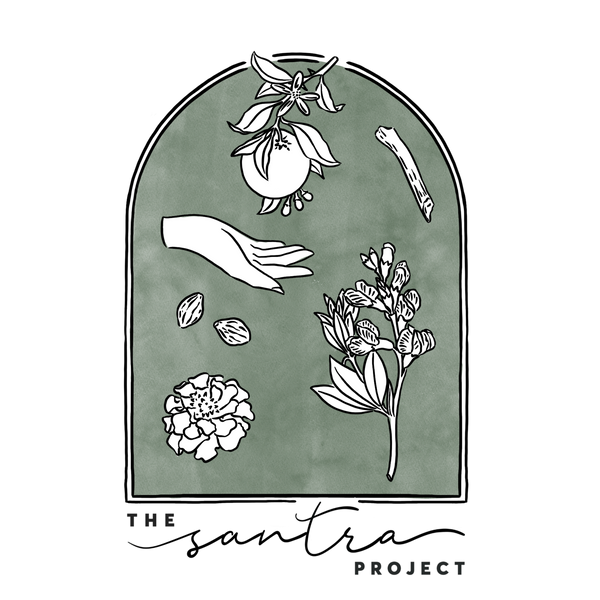
Natural Dyes
Share
Madder root, also known as Manjistha, is one of the oldest colours to have ever been used for dyeing fabric. It dates back all the way to the Indus Valley Civilization. The extract is regularly used by Indian dyersto achieve beautiful hues of red to pinks, to even oranges and peaches!

Turmeric has been used in natural dyeing for centuries as it enchances the brightness of yellows. Because it acts as a stain,it is mixed with dried pomegranate peels and myrobalan so as to make the colour last better on the fabric. The colours can range from bright yellow to dull mustards.

Myrobalan nut is a staple in natural dyeing for dyers in India. It has been used as a mordant and a dye for centuries by artisans. Once a fabric is dyed in myrobalan, the fabric appears to be a buttery yellow or have a yellow hue to it. If added to a pot with a bit of jaggery and iron, the fabric can turn colours from deep mossy greens to dark greys.

Jaggery mixed with waste rusted iron or iron powder and water in a large vessel is a pH changer for natural dyes. The fabric is first dyed in a bath of dried pomegranate peels, myrobalan and turmeric and then dipped into a pot of jaggery and iron water mixture to result in the most mossy green or dark grey colour in natural dyes.

Dried pomegranate peels are extracted in a pot of hot water or made into an extract/powder. Since it is rich in tannins, a concoction of dried pomegranate peels, myrobalan and turmeric is prepared and the fabric is then immersed into the pot of water and left there for a few hours to boil and simmer to then achieve bright yellows or mustard yellows.

Hibiscus has been long touted as a dye ingredient in India for the climate and because they are avid dyers.
Dark red flowering hibiscus are the most valuable for dyeing. Pink flowers give golds and tans.
The humble marigold makes a beautiful and easy color that captures summer.
Marigold flowers yield rich and vibrant yellows and oranges.
Marigolds create a nice creamy and light buttery yellow too.

Dahlias are some of the most beautiful flower heads that also make a lovely natural dye.
Dahlia blossoms will make yellow, orange and green dye colours. They can be picked fresh, dried or after the first frost.

Natural dyeing with rose produces imprints of the Rose while infusing the essence of the petals into the textile and immortalizing the natural beauty.Depending on the color of the rose, the dye bath can be intense or a lot less intense. Brightly and more deeply colored roses produce a stronger dye bath than lighter or peachier colors. 
Onion Skins are a nice introduction to natural dyes for those who delight in colour from kitchen waste.They produce lovely, easily-extracted colors.
Red onion skins give shades of green ne browns.

